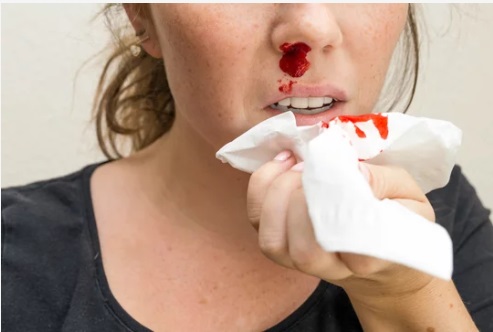Your nose! It probably isn’t something you think about all that much, at least until it starts gushing blood everywhere. Nosebleeds can show up out of nowhere and some people get more of them than others.
Sometimes when a character on TV gets a nosebleed, it’s like a sign that something is seriously wrong with them, but in real life, there is usually nothing to worry about. How often they happen mostly depends upon how dry your nose is or on how often you stick your finger up there.
Up to 60% of people will get a nosebleed at least once in their lives, which shocks me because who are these people who don’t get nosebleeds and how can I be one of them. That’s probably because those people get sick more easily, which can irritate their noses.
A nosebleed starts when blood vessels rupture in your nose. Your nose is packed with blood vessels.
The official term for nosebleed is EPISTAXIS and there are 2 types of them.
The most common type is Anterior Epistaxis where blood vessels from a group just inside your nostrils rupture and it usually involves one nostril. The group of blood vessels is called Kiesselbach’s plexus or Little’s area after the doctors who first described it and those nosebleeds can usually be treated at home.
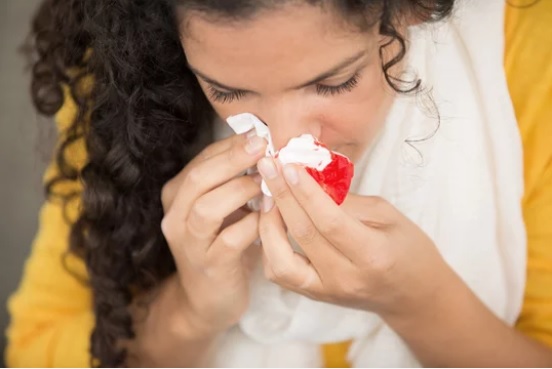
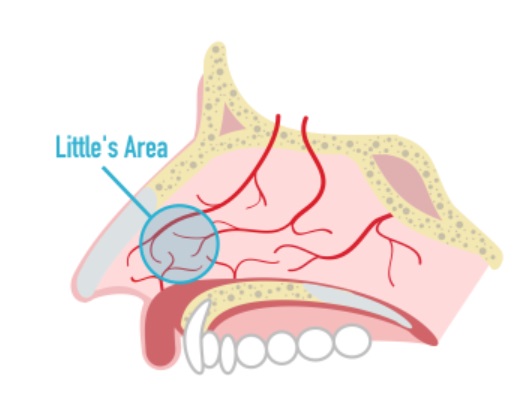
A nosebleed can also start in the back of the nose. Those are called Posterior Nosebleeds and they usually involve both nostrils. They can be more serious and sometimes require a doctor, and they often happen in the elderly because of other health problems, like high blood pressure. They start when arteries rupture from a group called Woodruff’s plexus, and since they are closer to the back of your throat, the blood can sometimes drain down there and cause nausea and vomiting.
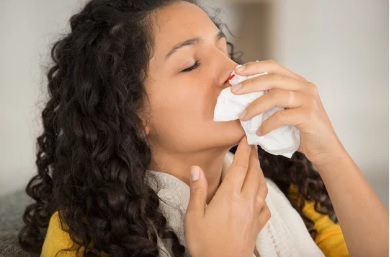
Most nosebleeds happen spontaneously. They usually happen when things like dry air, smoke, or dehydration dry out some of the mucus that protects your nasal septum that barrier that splits your nose into two nostrils. That leaves your nose’s sensitive membranes more exposed, so blood vessels rupture more easily.
Applying pressure to your nose will slow the bleeding, so cells like platelets can create blood clots to seal the hole.
In serious cases, a doctor might actually have to close the wound with chemicals like silver nitrate or electric cautery, but it will normally stop on its own. So, if you do get a nosebleed, especially the kind where you bleed from the front of your nose, it’s most likely from dry weather, allergies, or because somebody punched you in the face or you scratched your nose with your fingernail. Just try to keep your nose clean and hydrated so your natural mucus can do its thing.
Nosebleeds are common, especially if you have colds or allergies. Many things can cause a nosebleed. Some nosebleeds stop on their own with pressure. Others need packing. Some get cauterized (sealed). If you have gauze or other packing materials in your nose, you will need to follow up with your doctor to have the packing removed. You may need more treatment if you get nosebleeds a lot.
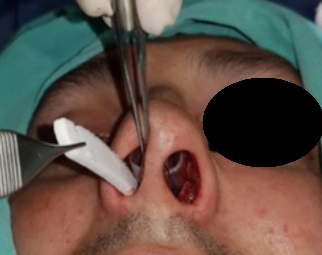
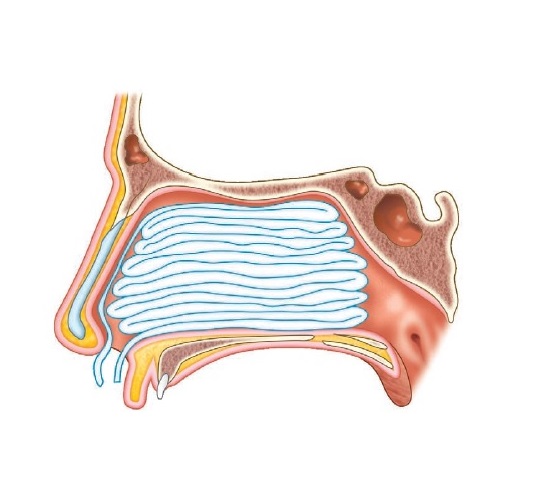
How can you care for yourself at home?
- Gently blow your nose to clear any blood clots. DO NOT BLOW THE NOSE HARD AT ALL.
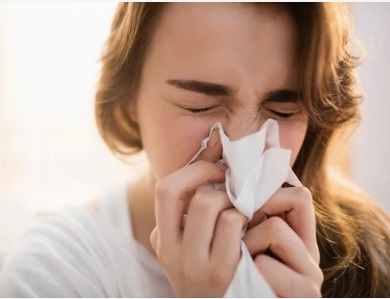
- Sit up and tilt your head slightly forward. This keeps blood from going down your throat.

- Use your thumb and index finger to pinch the front, soft part of your nose shut for at least 10 minutes. Do not check to see if the bleeding has stopped before the 10 minutes are up. If the bleeding has not stopped, pinch your nose shut for another 10 minutes. Using a nasal decongestant spray such as oxymetazoline before pinching your nose can also help to stop the bleeding. (Use of oxymetazoline/xylometazoline is NOT SUGGESTED for Hypertensive patients)
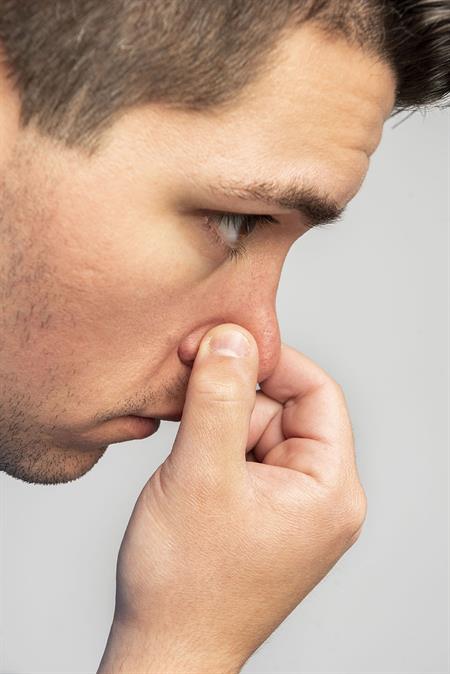
- When the bleeding has stopped, try not to pick, rub, or blow your nose for several hours. Avoiding these things helps keep your nose from bleeding again.
How to prevent nosebleeds?
- Do not blow your nose too hard.
- DO NOT lift or strain after a nosebleed.
- Raise your head on a pillow while you sleep.
- Put a thin layer of a saline- or water-based nasal gel, such as NasoGel, inside your nose. Put it on the septum, which divides your nostrils. This will prevent dryness that can cause nosebleeds.
- Use a vaporizer or humidifier to add moisture to your bedroom. Follow the directions for cleaning the machine.
- Do not use Aspirin, Ibuprofen, or Naproxen for 36 to 48 hours after a nosebleed unless your doctor tells you to.
- Talk to your doctor about stopping any other medicines you are taking. Some medicines may make you more likely to get a nosebleed.
- Do not use cold medicines or nasal sprays without first talking to your doctor. They can make your nose dry.
- Do not snort tobacco, drugs, or other drying substances up your nose.
When should you call for help?
Seek immediate medical care if:
- Your nose is still bleeding after you have applied pressure for 15 minutes.
- There is a lot of blood running down the back of your throat even after you pinch your nose and tilt your head forward.
- You feel weak or lightheaded.
- You have a nosebleed after a head injury.
Watch closely for changes in your health, and be sure to contact your doctor if:
- You get nosebleeds often, even if they stop.
- You do not get better as expected.
Home remedies to prevent nosebleeds:
- Cold compression: Take a thin towel and wrap some ice cubes in it. Sit upright and place this ice pack over the bridge of your nose. Leave this for about 10 minutes and repeat it several times till the bleeding stops.
- Apple Cider Vinegar: Take a glass of lukewarm water and add 2 teaspoons of apple cider vinegar. Mix this well and have this 2 to 3 times a day to effectively stop the nosebleed.
- Onion: Cut a thick slice of onion and place it under your nose and inhale the smell. The strong and pungent smell of onions helps to clot the blood.
- Moisturizer: In extremely dry weather, keep the inner nasal membranes moist to avoid nosebleeds. You can use Vaseline, oil, humidifier, steam, Nasoclear, etc.
- Vitamin K: Vitamin K-rich foods help in the formation of collagen, which helps in creating a moist lining in the nose.
- Vitamin C: Vitamin C-rich foods if taken on a daily basis help make the blood vessels stronger so they don’t get easily ruptured.
Remember to never lie down or tilt the head back during a nosebleed, as this could choke you or cause coffee-colored vomiting later.
Take care of yourself and live healthy.
THANK YOU
MEDICAL ADVICE DISCLAIMER:
This blog including information, content, references, and opinions is for informational purposes only.
The Author does not provide any medical advice on this platform.
Viewing, accessing, or reading this blog does not establish any doctor-patient relationship.
The information provided in this blog does not replace the services and opinions of a qualified medical professional who examines you and then prescribes medicines.
And if you have any questions of medical nature, please refer to your doctor or the qualified medical personnel for evaluation and management at a clinic/hospital near you.
The content provided in this blog represents the Author’s own interpretation of research articles.
